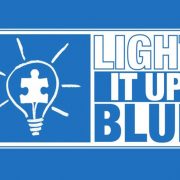Teaching Action Labels to Children with Autism
Oftentimes, parents of children with autism face challenges when their child struggles to meet typical developmental milestones. One effective way to support language development and help children understand their surroundings is by teaching action labels. These labels provide children with a means of communication, making daily routines smoother and more predictable. They also expand vocabulary and improve a child’s ability to identify people, objects, and actions.
Whether you’re just starting or looking to reinforce existing strategies, this post offers practical insights and support. Here’s what we’ll explore:
- What are Action Labels?
- When should you Start Teaching Action Labels?
- Why are Action Labels Important?
- Common Challenges in Teaching Action Labels?
- The key takeaways from using visuals to help students with autism

What are Action Labels?
Action labels help children with autism build language skills by naming objects, people, and actions. The goal is for the child to not only say the word but also understand its meaning. For example, using the five senses during daily routines can help children identify common items they encounter. When teaching action labels, minimize background noise and distractions so the child can focus fully on the object being labeled.
When should you Start Teaching Action Labels?
The right time to introduce action labels varies for each child. However, once a child begins engaging with their environment and showing interest in people and routines, it’s often a good time to start. Here’s a helpful checklist:
- Shows interest in surroundings
- Engages with others
- Follows a daily routine
- Understands or uses more than a few words
Start with ongoing actions. For instance, say “Show me jumping,” and encourage the child to jump. Then ask them to identify the same action when someone else does it—like when mom jumps and you ask, “What am I doing?” Repetition is key. Children need consistent practice to use action labels correctly and confidently.

Why are Action Labels Important?
Action labels offer children with autism a structured way to communicate. Because many children with autism experience language delays, these labels fill a critical gap in their development. Neurotypical children learn to label objects, actions, and people by observing and imitating others. Children with autism often need more intentional support to make these connections. Teaching action labels helps bridge that gap, giving children the tools to interact meaningfully with others and their environment.
Common Challenges in Teaching Action Labels
Some common challenges in teaching action labels include a delay in using, limited imitation skills, a lack of understanding, and difficulty with inconsistent use.
- Delay in use: Children with autism often speak later than their peers, which can slow their ability to label actions consistently.
- Limited imitation skills: Many children learn language by mimicking adults. Children with autism may not naturally imitate, making language acquisition more difficult.
- Lack of understanding: Once children with autism are taught labels, they may use them through memorization rather than actually understanding what it is that they are labeling. They just use them out of habit or to appease rather than actually connecting what it is they are labeling with a word or action they understand.
- Difficulty inconsistent use: Without reinforcement across all environments—home, school, therapy—children may struggle to use labels reliably.
Teaching a child to label correctly can truly expand their view of the world around them. Words are used as a way to communicate within the world, so giving that tool to a child with autism can be extremely vital. Using modeling, prompting, and reinforcement in all aspects and environments of a child’s life increases their consistent use and true understanding of the labels.
Key Takeaways
- Action labels are essential tools for helping children with autism develop language and communication skills.
- Teaching action labels should begin when a child shows interest in their environment and demonstrates basic word comprehension.
- Consistency across environments—home, school, therapy—is crucial for successful label adoption.
- Common challenges include delayed language use, limited imitation, and memorization without understanding.
- LeafWing Center’s ABA therapists offer personalized plans to support your child’s communication journey.
Without reinforcement across all environments—home, school, therapy—children may struggle to use labels reliably.
At LeafWing Center, we specialize in helping children with autism build communication skills through personalized ABA therapy. Our therapists design action label strategies that match your child’s developmental level and learning style. We integrate these labels into everyday routines, play, and social interactions—ensuring your child learns in ways that feel natural and empowering.
We don’t just teach words—we help children connect those words to meaning, emotion, and independence. With consistent support across home and school environments, your child can develop the confidence to express themselves and navigate the world with greater ease.
Let us help your child take the next step toward meaningful communication. Our team is ready to create a plan that fits your child’s needs and celebrates their progress every step of the way.
Related Glossary Terms
- Functional Communication Training (FCT)
- Inclusive Classroom
- Picture Exchange Communication System (PECS)
Other Related Articles
- Autism Communication Strategies
- Strategies For Autism In The Classroom
- Choice Boards And “Wait” Support For Students With Autism In The Classroom
- Supporting Students With Autism In The Classroom With An Assignment Notebook
Frequently asked questions about ABA therapy
What is ABA Therapy used for?
ABA-based therapy can be used in a multitude of areas. Currently, these interventions are used primarily with individuals living with ASD; however, their applications can be used with individuals living with pervasive developmental disorders as well as other disorders. For ASD, it can be used in effectively teaching specific skills that may not be in a child’s repertoire of skills to help him/her function better in their environment whether that be at home, school, or out in the community. In conjunction with skill acquisition programs, ABA-based interventions can also be used in addressing behavioral excesses (e.g., tantrum behaviors, aggressive behaviors, self-injurious behaviors). Lastly, it can also be utilized in parent/caregiver training.
In skill acquisition programs, a child’s repertoire of skills is assessed in the beginning phase of the services in key adaptive areas such as communication/language, self-help, social skills, and motor skills as well. Once skills to be taught are identified, a goal for each skill is developed and then addressed/taught by using ABA-based techniques to teach those important skills. Ultimately, an ABA-based therapy will facilitate a degree of maintenance (i.e., the child can still perform the learned behaviors in the absence of training/intervention over time) and generalization (i.e., the learned behaviors are observed to occur in situations different from the instructional setting). These two concepts are very important in any ABA-based intervention.
In behavior management, the challenging behaviors are assessed for their function in the beginning phase of the services. In this phase, the “why does this behavior happen in the first place?” is determined. Once known, an ABA-based therapy will be developed to not just decrease the occurrence of the behavior being addressed, but also teach the child a functionally-equivalent behavior that is socially-appropriate. For example, if a child resorts to tantrum behaviors when she is told she cannot have a specific item, she may be taught to accept an alternative or find an alternative for herself. Of course, we can only do this up to a certain point—the offering of alternatives. There comes a point when a ‘no’ means ‘no’ so the tantrum behavior will be left to run its course (i.e., to continue until it ceases). This is never easy and will take some time for parents/caregivers to get used to, but research has shown that over time and consistent application of an ABA-based behavior management program, the challenging behavior will get better.
In parent training, individuals that provide care for a child may receive customized “curriculum” that best fit their situation. A typical area covered in parent training is teaching responsible adults pertinent ABA-based concepts to help adults understand the rationale behind interventions that are being used in their child’s ABA-based services. Another area covered in parent training is teaching adults specific skill acquisition programs and/or behavior management programs that they will implement during family time. Other areas covered in parent training may be data collection, how to facilitate maintenance, how to facilitate generalization of learned skills to name a few.
There is no “one format” that will fit all children and their families’ needs. The ABA professionals you’re currently working with, with your participation, will develop an ABA-based treatment package that will best fit your child’s and your family’s needs. For more information regarding this topic, we encourage you to speak with your BCBA or reach out to us at info@leafwingcenter.org.
Who Can Benefit From ABA Therapy?
There is a common misconception that the principles of ABA are specific to Autism. This is not the case. The principles and methods of ABA are scientifically backed and can be applied to any individual. With that said, the U.S. Surgeon General and the American Psychological Association consider ABA to be an evidence based practice. Forty years of extensive literature have documented ABA therapy as an effective and successful practice to reduce problem behavior and increase skills for individuals with intellectual disabilities and Autism Spectrum Disorders (ASD). Children, teenagers, and adults with ASD can benefit from ABA therapy. Especially when started early, ABA therapy can benefit individuals by targeting challenging behaviors, attention skills, play skills, communication, motor, social, and other skills. Individuals with other developmental challenges such as ADHD or intellectual disability can benefit from ABA therapy as well. While early intervention has been demonstrated to lead to more significant treatment outcomes, there is no specific age at which ABA therapy ceases to be helpful.
Additionally, parents and caregivers of individuals living with ASD can also benefit from the principles of ABA. Depending on the needs of your loved one, the use of specified ABA techniques in addition to 1:1 services, may help produce more desirable treatment outcomes. The term “caregiver training” is common in ABA services and refers to the individualized instruction that a BCBA or ABA Supervisor provides to parents and caregivers. This typically involves a combination of individualized ABA techniques and methods parents and caregivers can use outside of 1:1 sessions to facilitate ongoing progress in specified areas.
ABA therapy can help people living with ASD, intellectual disability, and other developmental challenges achieve their goals and live higher quality lives.
What does ABA Therapy look like?
Agencies that provide ABA-based services in the home-setting are more likely to implement ABA services similarly than doing the same exact protocols or procedures. Regardless, an ABA agency under the guidance of a Board-Certified Behavior Analyst follows the same research-based theories to guide treatment that all other acceptable ABA agencies use.
ABA-based services start with a functional behavior assessment (FBA). In a nutshell, a FBA assesses why the behaviors may be happening in the first place. From there, the FBA will also determine the best way to address the difficulties using tactics that have been proven effective over time with a focus on behavioral replacement versus simple elimination of a problem behavior. The FBA will also have recommendations for other relevant skills/behaviors to be taught and parent skills that can be taught in a parent training format to name a few. From there, the intensity of the ABA-based services is determined, again, based on the clinical needs of your child. The completed FBA is then submitted to the funding source for approval.
One-on-one sessions between a behavior technician and your child will start once services are approved. The duration per session and the frequency of these sessions per week/month will all depend on how many hours your child’s ABA services have been approved for—usually, this will be the number recommended in the FBA. The sessions are used to teach identified skills/behaviors via effective teaching procedures. Another aspect of ABA-based services in the home-setting is parent training. Parent training can take many forms depending on what goals have been established during the FBA process. The number of hours dedicated for parent training is also variable and solely depends on the clinical need for it. If a 1:1 session is between a behavior technician and your child, a parent training session or appointment is between you and the case supervisor and with and without your child present, depending on the parent goal(s) identified. Parent training service’s goal is for you to be able to have ample skills/knowledge in order for you to become more effective in addressing behavioral difficulties as they occur outside of scheduled ABA sessions. Depending on the goals established, you may be required to participate in your child’s 1:1 sessions. These participations are a good way for you to practice what you have learned from the case supervisor while at the same time, having the behavior technician available to you to give you feedback as you practice on those new skills.
As mentioned in the beginning, no two ABA agencies will do the same exact thing when it comes to providing ABA services; however, good agencies will always base their practice on the same empirically-proven procedures.
How do I start ABA Therapy?
In most cases, the first item required to start ABA therapy is the individual’s autism spectrum disorder (ASD) diagnosis report. This is typically conducted by a doctor such as a psychiatrist, psychologist, or a developmental pediatrician. Most ABA therapy agencies and insurance companies will ask for a copy of this diagnosis report during the intake process as it is required to request an ABA assessment authorization from the individual’s medical insurance provider.
The second item required to start ABA therapy is a funding source. In the United States, and in cases where Medi-Cal or Medicare insurances are involved, there is a legal requirement for ABA services to be covered when there is a medical necessity (ASD diagnosis). Medi-Cal and Medicare cover all medically necessary behavioral health treatment services for beneficiaries. This typically includes children diagnosed with ASD. Since Applied Behavior Analysis is an evidence based and effective treatment for individuals with ASD, it is considered a covered treatment when medically necessary. In many cases, private insurance will also cover ABA services when medically necessary, however in these cases, it is best to speak directly with your medical insurance provider to determine the specifics of the coverage and to ensure that ABA is in fact, a covered benefit. Additionally, some families opt to pay for ABA services out-of-pocket.
The next step to starting ABA therapy is to contact an ABA provider whom you are interested in working with. Depending on your geographic location, ABA agencies exist in many cities across the United States. Your insurance carrier, local support groups, and even a thorough online search can help you find reputable and properly credentialed ABA agencies near you. Our organization, LeafWing Center, is based in southern California and is recognized for aiding people with ASD achieve their goals with the research based on applied behavior analysis.
Once you have identified the ABA provider with whom you wish to work, they should help you facilitate the next steps. These will include facilitating paperwork and authorizations with your funding source. Once the assessment process begins, a BCBA (Board Certified Behavior Analyst) or qualified Program Supervisor should get in contact with you to arrange times in which interviews with parents/caregivers and observations of your loved one can be conducted. This will help in the process of gathering important clinical information so that with your collaboration, the most effective treatment plans and goals can be established for your loved one. This process is referred to as the Functional Behavior Assessment (FBA) and is elaborated on in different blog posts on our website. With regard as to what can be expected once ABA therapy begins, please read our blog post titled: When You Start an ABA program, What Should You Reasonably Expect from Your Service Provider?



 A helpful way to effectively tackle a child’s problem behavior is to figure out why it is happening in the first place. To implement an intervention without this important information may produce no results or even make the challenging behavior far worse than it was before implementing the tactic you’ve chosen.
A helpful way to effectively tackle a child’s problem behavior is to figure out why it is happening in the first place. To implement an intervention without this important information may produce no results or even make the challenging behavior far worse than it was before implementing the tactic you’ve chosen.
